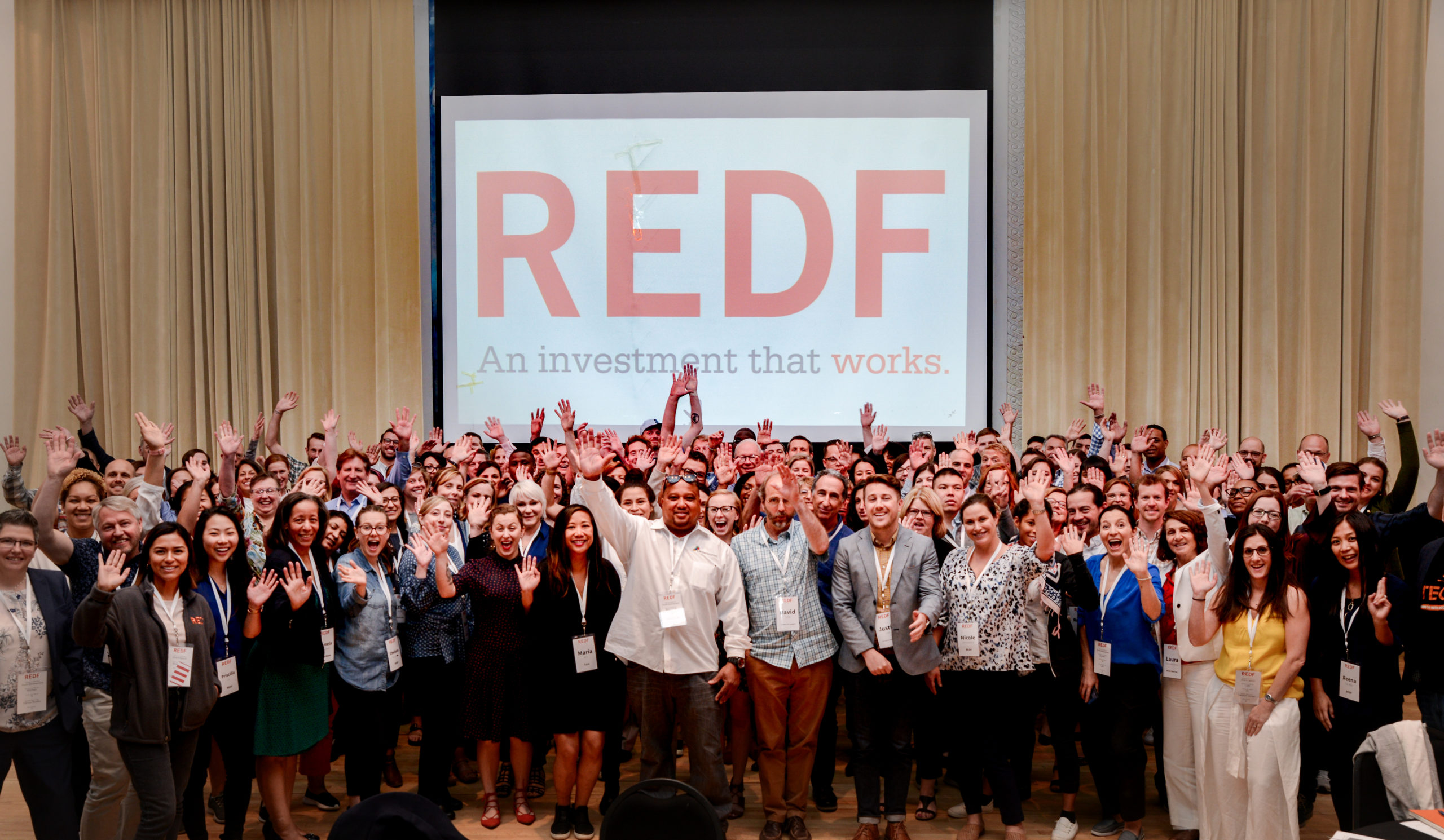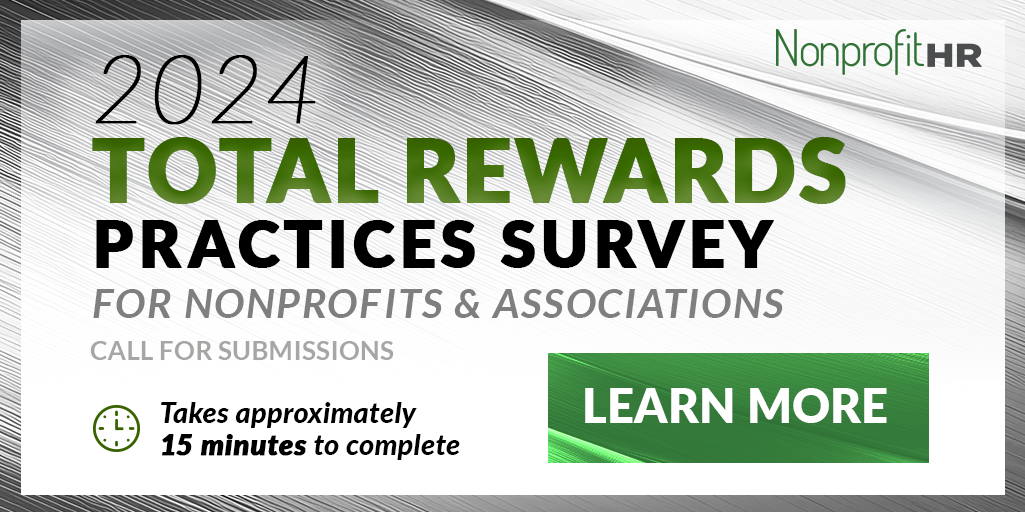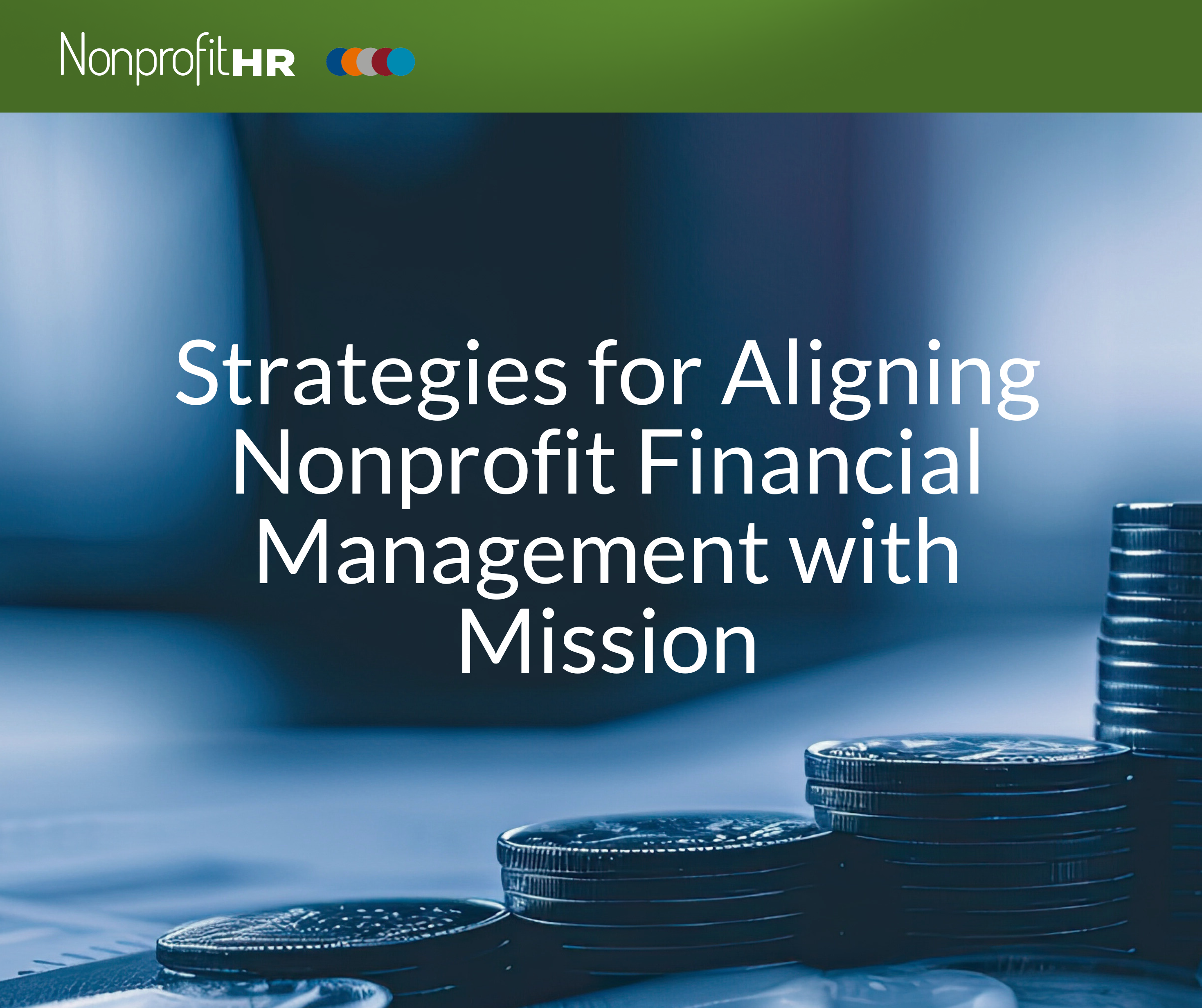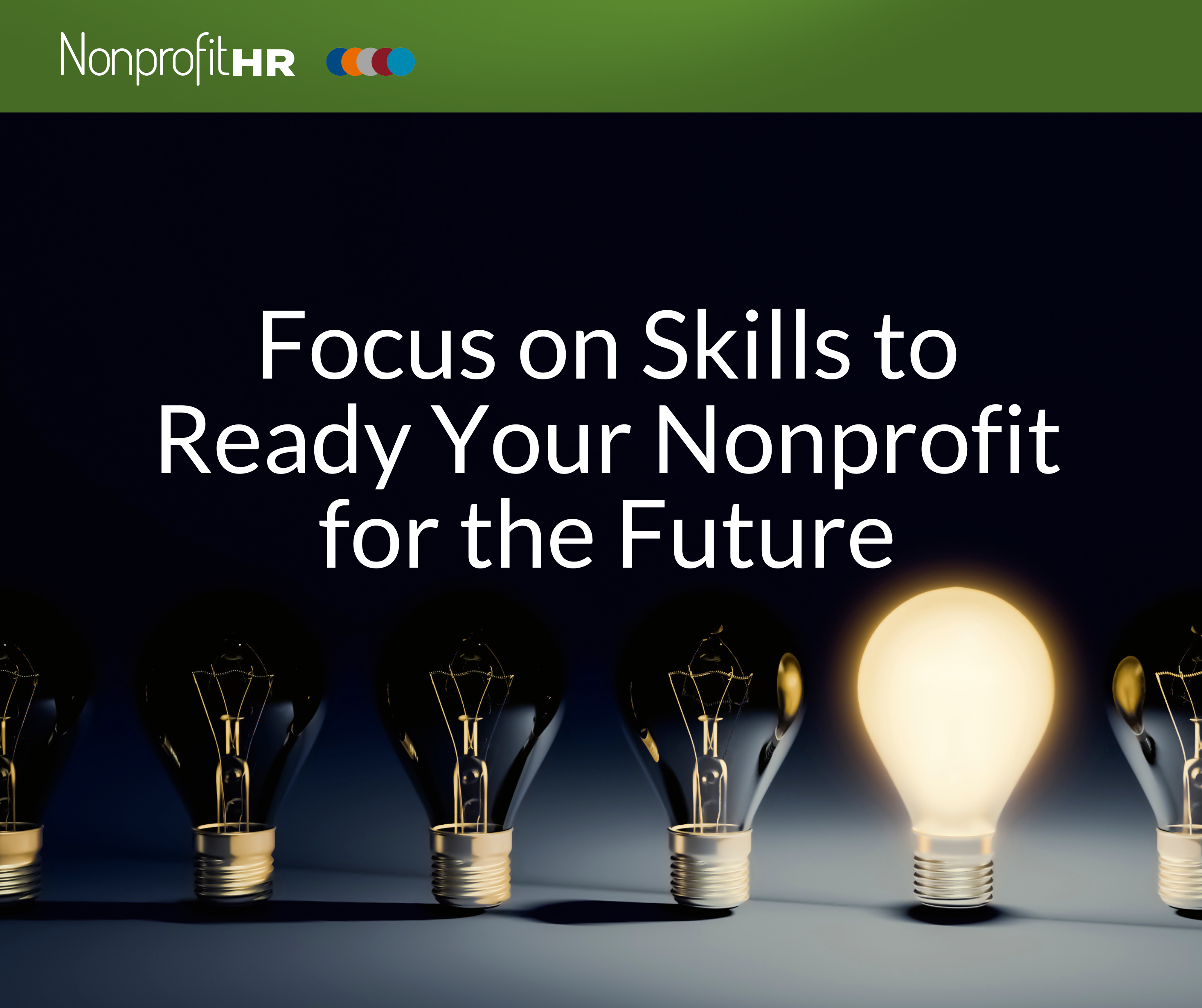WTOP: 5 ways nonprofits can…
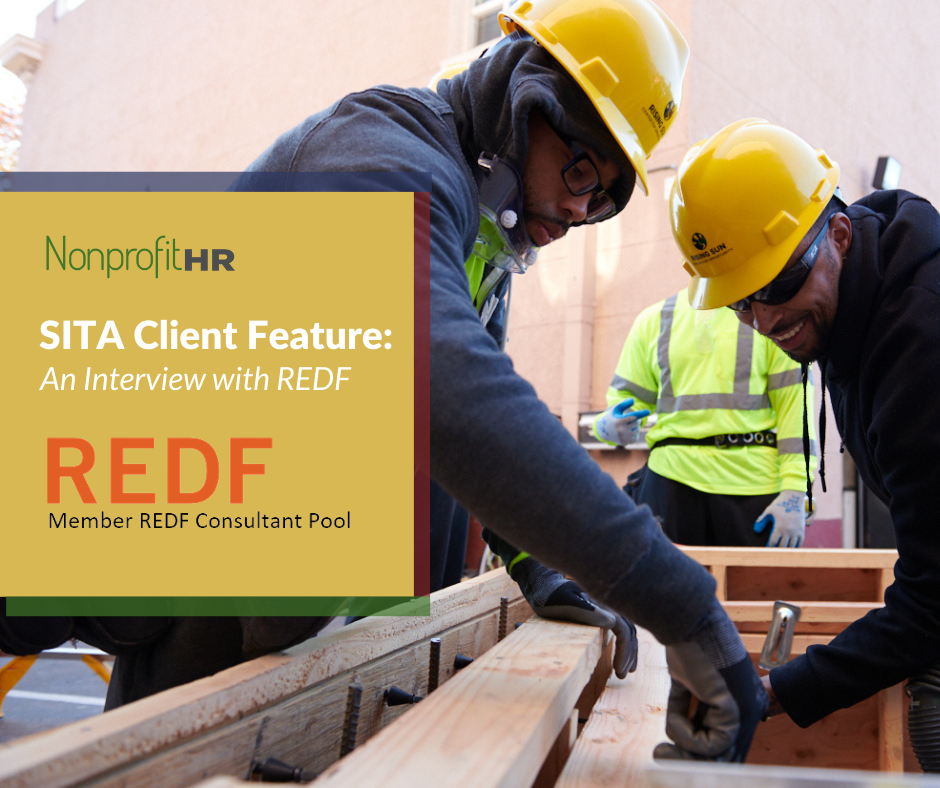 Founded in 1997, REDF (the Roberts Enterprise Development Fund) is a venture philanthropy accelerating a national movement of employment social enterprises (ESEs). In the words of REDF, ESEs are “mission-driven, revenue-generating businesses that invest the money they make into helping people striving to overcome employment barriers get jobs, keep jobs, and build a better life.” The organization leans on independent research that shows an investment in ESEs leads to greater economic security and mobility and a significant rate of return to society. We sat down with Jeff Bergquist, Director of Capacity Building, and Kristen Green, Manager of Capacity Building, to share more about our client’s incredible mission, current processes, future goals and valuable people management partnership. To learn more about REDF, visit www. redf.org.
Founded in 1997, REDF (the Roberts Enterprise Development Fund) is a venture philanthropy accelerating a national movement of employment social enterprises (ESEs). In the words of REDF, ESEs are “mission-driven, revenue-generating businesses that invest the money they make into helping people striving to overcome employment barriers get jobs, keep jobs, and build a better life.” The organization leans on independent research that shows an investment in ESEs leads to greater economic security and mobility and a significant rate of return to society. We sat down with Jeff Bergquist, Director of Capacity Building, and Kristen Green, Manager of Capacity Building, to share more about our client’s incredible mission, current processes, future goals and valuable people management partnership. To learn more about REDF, visit www. redf.org.
Nonprofit HR: Can you describe REDF’s mission and specifically what it means to be an employment social enterprise (ESE)? What kind of community is REDF creating and who are the types of stakeholders that exist in your ecosystem?
Bergquist: REDF has an overarching, broad vision and that is to promote a more inclusive economy where everyone has the ability to work and thrive. We move toward that goal by investing in and advising social enterprises that employ people overcoming barriers to work. Research documents there are at least ten million people who face employment barriers—people who want to work, but who are typically overlooked by mainstream employers. For nearly 25 years, REDF has been working to build the field, and support employment social enterprises (ESEs) and the leaders who run them because we know, and our own research documents, that this is an effective model to address some of society’s most intractable challenges.
An ESE is a business with a social purpose. The social purpose for an ESE is employment, that’s the beginning point. These are businesses that exist to provide employment opportunities to people with a lot of untapped talent and skills, but who otherwise have a tough time getting into the workforce—people returning home from incarceration, those who have faced chronic homelessness, young people disconnected from school and work and others. In addition to investing in ESEs, we have a number of programs that focus on supporting the leaders of these organizations and in cultivating entrepreneurs in the field including a leadership Accelerator as well as a deep set of supports for organizations that are in our Growth Portfolio.
That’s the broad point of where we’re coming from. In terms of what community we’re building, we’ve been doing this type of work since 1997, we’ve supported over 200 organizations that have collectively employed over 73,000 people that have barriers to work and those businesses have, combined, earned upwards of a billion dollars in revenue. It’s a significant community. In terms of the broad stakeholders in the field, there are many but you can think of it in a few different camps. There are ESEs themselves; the people being served; our government partners, which are pretty critical for a lot of initiatives; and then the broader funding community as well. And we interact with all of them on a variety of different initiatives.
Green: I’ll also add that we have what’s called REDF Community, which is specifically to provide a space and place for our ESE leaders and staff members to connect with and support each other… We’re very big into peer support. They are the experts, they are the ones doing this work and we bring them together in retreats or affiliate groups in order to provide them space. It can be really tricky when you’re running a business, but you also have a social mission. And sometimes, you can feel like no one else understands, so we bring people together who really get it and they can talk about it with each other and have REDF support them in this work. We created the REDF Community specifically for that purpose.
Nonprofit HR: What does “building capacity” mean for REDF?
Bergquist: At a high level, the overarching charge of capacity building at REDF is to promote more scale and sustainability among the social enterprises that we serve. Scale doesn’t necessarily just mean more people coming in the door, there are a lot of different ways you can think about scale and quality. It could mean more people, bigger businesses, greater policy impact, more sites or better outcomes. The sustainability piece is critical though, so one thing that we’ve learned over our history, sometimes the hard way, is that it isn’t always about growth. You have to make sure that when you’re partnering and encouraging organizations to grow, you are helping them build a foundation for success long term. I would say increasingly a lot of our focus has been on some of those areas that may be less sexy, if you will, to traditional funders but that we think are quite core to what it means to be a good organization.
There are a couple of different ways that capacity building expresses itself tactically. One is leadership development. Leaders are key, of course, and there are a few things we focus on. We really emphasized community building and peer-to-peer connection recently. There are a lot of programs and initiatives that are very much geared toward providing leaders in the field opportunities to connect with one another and to learn from one another in a much more cohesive way. There is an element that I would call more of a standard consulting model, where we will work with organizations on projects of strategic importance on a variety of topics. We do a lot of work related to the business model and the program model that’s about how a business earns more money and becomes more profitable and how they serve more people and with better outcomes, but also fundraising, operations and human capital, and that’s actually where SITA would come in. Then, the third component of capacity building you might think of at REDF would be more in the curriculum camp or guided workshop. I referenced earlier this program called the Accelerator and it’s basically an intensive cohort-based experience for entrepreneurs who want to accelerate the growth of their organizations. We run them through multi-day sessions where we provide a lot of best practice instruction, get different facilitators and help them from a cohort-model institute better practices at the organization.
Nonprofit HR: REDF addresses various large, ongoing issues that are complex and interconnected. How does the organization determine priorities among these issues considering the weight of each?
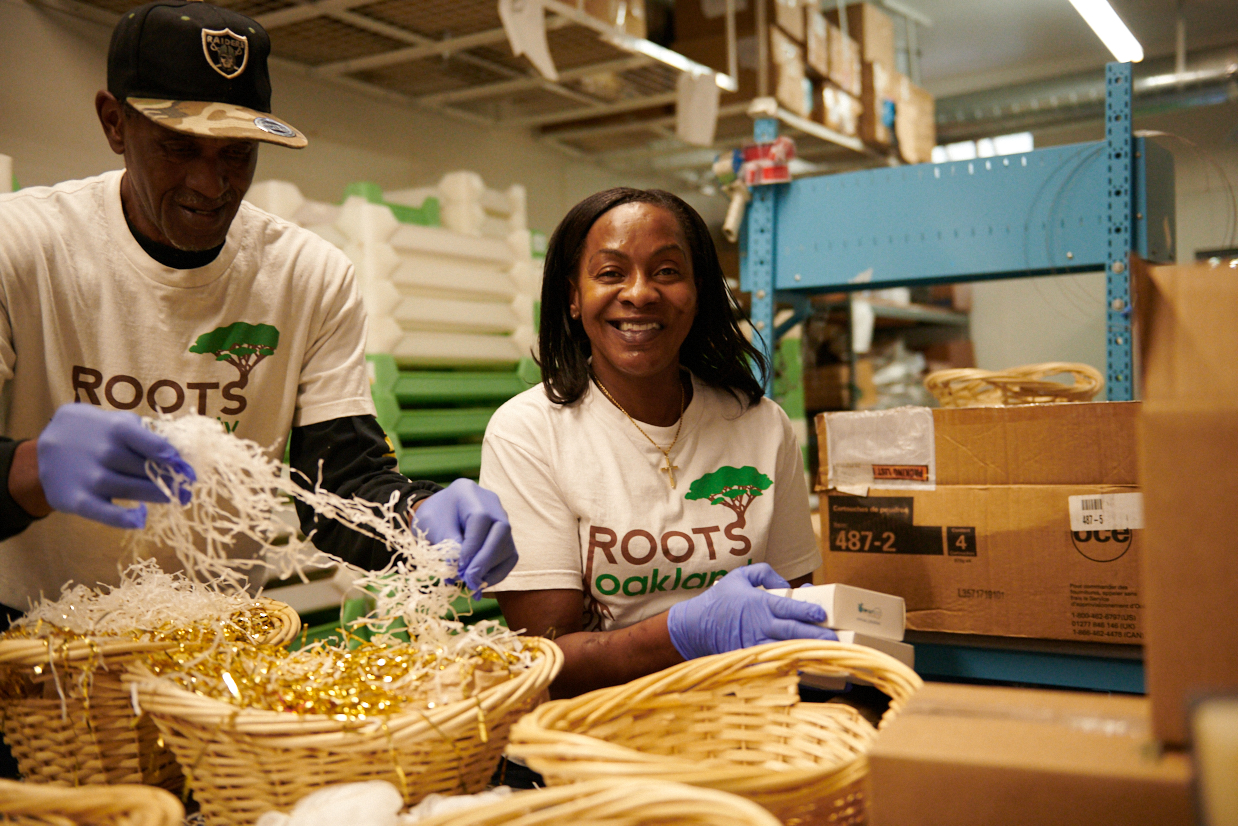 Bergquist: There are both art and science components to this and it’s not necessarily a static formula. If you were to look back at different strategic periods in REDF’s history, you would see different weighting of resources to these different areas, and I expect that to continue moving forward. The way that I would describe it is that the first part of REDF’s journey was really about deeply understanding employment social enterprises’ model and how to help and partner with organizations to help them reach the potential that they wanted to achieve. And that took a long time, it takes a long time to learn how to do that, and we’ve benefitted from partnering with so many great organizations along the way.
Bergquist: There are both art and science components to this and it’s not necessarily a static formula. If you were to look back at different strategic periods in REDF’s history, you would see different weighting of resources to these different areas, and I expect that to continue moving forward. The way that I would describe it is that the first part of REDF’s journey was really about deeply understanding employment social enterprises’ model and how to help and partner with organizations to help them reach the potential that they wanted to achieve. And that took a long time, it takes a long time to learn how to do that, and we’ve benefitted from partnering with so many great organizations along the way.
Starting around 2010, we set our sights on expanding geographically. Before that, we had just focused on the Bay Area, and in the beginning of 2010, we started to expand throughout California. And in doing so, when you start expanding to new geographies, you have to start paying more attention to local policies and state laws, and there is more resourcing going in that direction. As the portfolio grows, you have to start weighting in the community element. The conception of what a community of leaders is looks quite different when your portfolio is 100 organizations versus five. In 2015, we went from California to a national level and in this current field, if it’s possible to do so, we have gone even more national. From 2015 to 2020, we have focused on several geographic clusters and now we’re really focused on supporting organizations all throughout the country. All that is to say that over time, we’ve been putting more and more resourcing into the policy arena, in terms of doing our best to make positive nudges, particularly at the state level in California, and to start trying to coalesce social enterprises themselves to advocate for policy change that will help ESEs nationally. We’ve also put way more effort in terms of the community side of things in the most recent portfolio because the scope of who we are working with has gotten much, much bigger.
I would say the last thing is traditionally, the capital we gave out was in the form of a grant. But a few years ago, we started to diversify and created the REDF Impact Investing Fund, or RIIF. This is really a vehicle for us to make loans to organizations where that’s a more preferred form of capital. That’s been an increased focus too, and that’s how our priorities have shifted. Over time, our North Star is how to drive scale in the field and to help ESEs become more of a mainstream, typical component of a solution in cities across the country and we’ve had to raise our sideline as a result.
Nonprofit HR: In reference to the organization’s national growth, was that organic? What prompted that?
Bergquist: It was actually government funding. In 2010, we were the recipient of a Social Innovation Fund (SIF) grant through the Obama Administration. It was essentially to give money to intermediaries who could then funnel that money to organizations on the ground to promote big change. In 2015, we got an even larger grant which we called SIF #2, or the second version of the Social Innovation Fund. The charge of that grant was to go outside of California and do a randomized controlled trial as part of our evidence building. Government funding and that program, from a financial standpoint, is what enabled us to grow broadly.
More strategically, the issues that we’ve been trying to tackle have always been large—they aren’t just a California issue. And there has been such a vibrant social enterprise community outside of California for a long time and I think it has always been part of our playbook to find a way to connect and build that on a more national scale. SIF was what allowed us to do that financially, but that funding went away with the Trump Administration in 2017. And so, through different funding means we’ve continued that and even gone further in the last strategic period.
Nonprofit HR: Was it always a part of the plan to expand nationally?
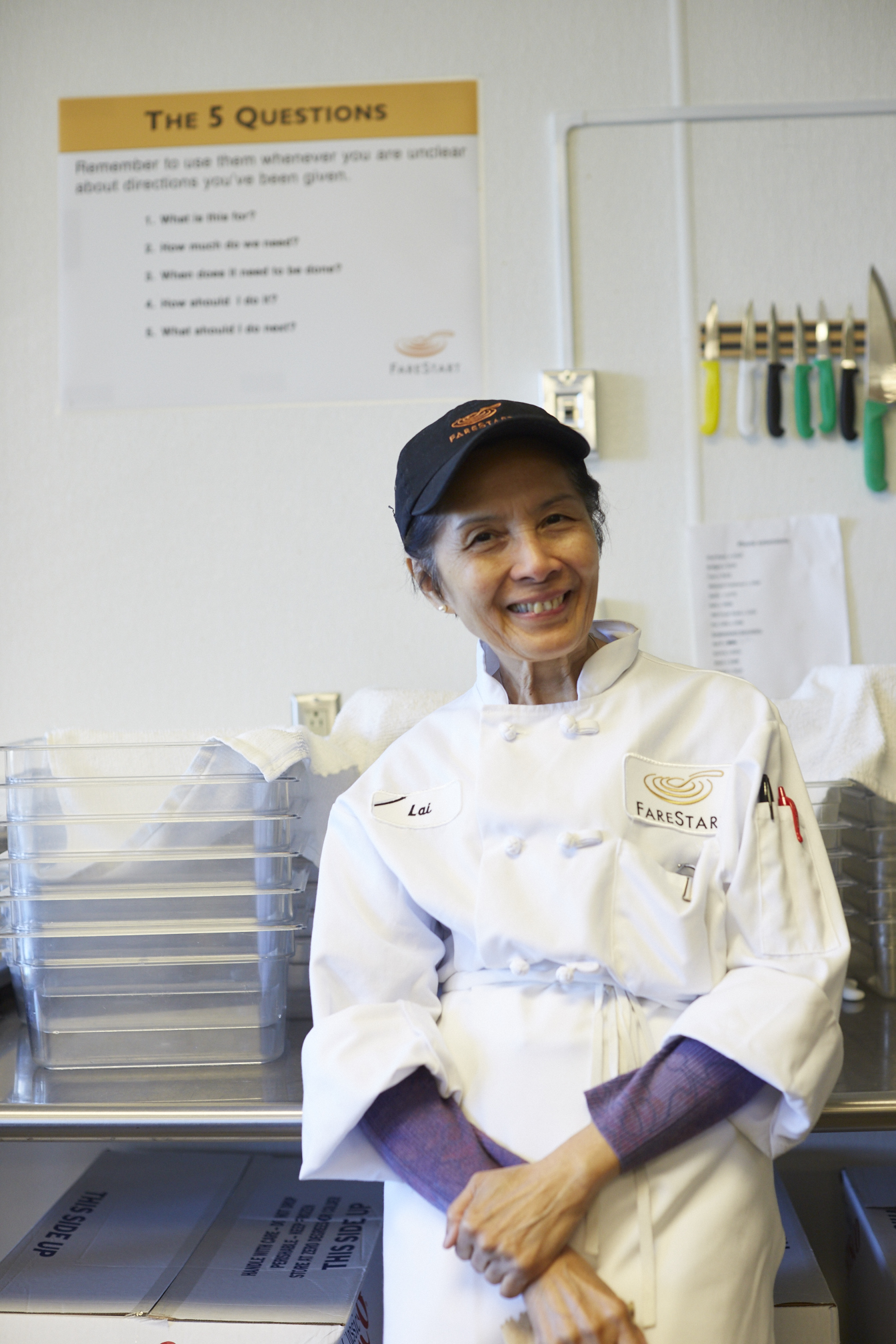 Bergquist: I couldn’t speak on behalf of maybe how REDF was thinking about things in 2005, but I think certainly since 2010, the plan has always been, how can we scale the number and quality of employment social enterprises more broadly? And how can we make employment social enterprises more of a mainstream component that governments, states and other funders can look to address some of these issues of how to make a more inclusive economy?
Bergquist: I couldn’t speak on behalf of maybe how REDF was thinking about things in 2005, but I think certainly since 2010, the plan has always been, how can we scale the number and quality of employment social enterprises more broadly? And how can we make employment social enterprises more of a mainstream component that governments, states and other funders can look to address some of these issues of how to make a more inclusive economy?
Green: We have a government partnership program called LA:RISE based in SoCal and it really got the attention of governments, cities and municipalities all over the country because it was one of the first to do this public-private partnership with workforce development and employment social enterprises. So, I would say [national growth] has definitely been on our radar, but also hearing the response from places outside of California and how they were interested in an employment social enterprise as a solution basically let us know that we were moving in the right direction. There has to be a want and need not only from our ESE partners, but also from our other types of partners, like government and other funders, because that is what allows us to do that work even more so. And so, we’ve just been hearing from funders and especially our government partners that that’s been of interest from all over the country.
Nonprofit HR: In speaking to the theory of change strategies, why is it necessary for REDF to “generate evidence,” and what is that evidence in support of? Who’s not listening, and why?
Bergquist: I might bucket evidence generation into several different camps. One type of evidence generation is day-to-day performance improvements. So, what does it mean to collect evidence on a day-to-day basis to make sure programs are continuing to succeed? That would be one part. I think the other part would be a formal generation of evidence through an evaluation that can be published and debated. Both of those are key, but I would say our push to do both comes from a variety of different places. On one level, yes, there is an element of generating evidence to convince certain stakeholders. But I also think every stakeholder we interact with wants evidence and wants more of it. There’s never a point at which we say that we have enough. Our thought is that there is always more to learn and there are always more ways to improve. As a result, that type of mentality has been in REDF’s DNA from the beginning, where we want to always invest in the learning side of what we’re doing and to think of our work as craftsmanship. It’s something that we’re going to get better at over time the more we do. There’s always more room to master.
In terms of who the stakeholders are and the evidence they require, I think there are a few different ones. There are governments—local, state and federal—and this is important in terms of unlocking public dollars. When you’re talking to an official who is overseeing a large budget, and you say that you need $5 million dollars to support XYZ initiative, then they ask how it works, you can’t just say “because we say so.” That’s really important.
It’s also super important to many of our other funding partners, and one interesting part about REDF is we’re not a foundation. We’re an intermediary; we raise money and give it out, so we’re constantly making the case to other funders. But it’s also incredibly important to our other employment social enterprises, from their own fundraising standpoint and the continuous improvement standpoint. They all want to get better constantly and they are very hungry to understand what best practices are in the field and what has been demonstrated, unequivocally, to be a good thing to do. Lastly, you can think of REDF as a stakeholder. We want to get better at capacity building every year. We want to get sharper every year in learning when and where an investment is going to really push the needle.
There is one thing that is a change. We have done several formal evaluations, we did an evaluation called the Mathematica Jobs Study that evaluated the efficacy of our portfolio from 2010 to 2015, and we just recently concluded a RCT (randomized controlled trial) of our previous portfolio. But we have been talking a lot internally about different ways to collect evidence, so one thing we’re thinking about a lot recently is that the evidence we generate doesn’t all have to purely be quantitative in measurement. How we are looking at feedback and evidence has shifted much more to be a balance between quantitative and qualitative measurements. Increasingly, instead of looking at if revenue grew from A to B, we’re trying to understand from a leader’s perspective in a social enterprise, how is this valuable? And hear directly from the participant workers themselves about the impact it’s had on them.
Nonprofit HR: What are the essential attributes of the leaders that REDF is developing? How does the organization’s philosophy on people management play into that leadership development?
 Bergquist: This is an area where we are still developing our framework. I think we’ve tried to take more of a bespoke, and less of a universal, approach on what it means to be a good leader. That said, there are several measurements we look at that we think are really good proxies of sustainable leadership. One that we look at a lot is connectedness to the field. We want to understand from all of our leaders, over time, to what degree they are feeling increasingly connected to their peers in the work. That would be one thing. We also ask and try to monitor, from a leader’s standpoint, to what degree they feel equipped to lead their organization to the next phase of wherever the organization is trying to get to. You could double click and unpack each of those, and you’d probably find a lot of different components, both tactical and interpersonal. But those are the metrics that we think things can more easily roll up.
Bergquist: This is an area where we are still developing our framework. I think we’ve tried to take more of a bespoke, and less of a universal, approach on what it means to be a good leader. That said, there are several measurements we look at that we think are really good proxies of sustainable leadership. One that we look at a lot is connectedness to the field. We want to understand from all of our leaders, over time, to what degree they are feeling increasingly connected to their peers in the work. That would be one thing. We also ask and try to monitor, from a leader’s standpoint, to what degree they feel equipped to lead their organization to the next phase of wherever the organization is trying to get to. You could double click and unpack each of those, and you’d probably find a lot of different components, both tactical and interpersonal. But those are the metrics that we think things can more easily roll up.
I would also say, to give a bit more direct answer, there are a few things that have come up prominently very recently. One is that we very much believe that there is benefit of having organizations with leadership that reflect the people they serve. That translates, for us, in trying to support more organizations that are led by people of color or organizations that are led by people with lived experience—or both. And for organizations that are currently not led by those individuals, encouraging them to think about how they can build the next generation of talent that are people of color or have lived experience. So, that would be one component.
A second component related to that is how we’ve been really focused on promoting the concept of asset framing at REDF over the last year, which is thinking less about the obstacles, challenges and barriers that an individual might face and more about the potential and aspirations that the individual has. And we think when leadership promotes and takes that lens to decision making, that’s a benefit to the participants in the field, so that’s a key element. I would say beyond that, I might talk about the evidence building elements. We think it is very important to make data-informed, evidence-based decisions; it doesn’t always have to be based on pure quantitative measurements, but we want some reasoning behind it. Then, related to that is that we want to support and work with leaders who really believe in the continuous improvement of both themselves and their organizations and what they can achieve. Wherever an organization comes in, we want to take them to the next level. Again, that doesn’t always mean bigger, but we want leaders that don’t feel complacent and are eager and itching to take the next step.
Nonprofit HR: Can you share a little bit more about asset framing and how it looks actualized?
Bergquist: A very tactical example of that is helping or encouraging groups to rethink how they frame their mission. A very traditional, standard mission statement in the field of employment social enterprises, circa 2008, might have been one framed around a problem, viewing the participants as a problem or an issue happening with them, and served as a call to the funding community to give funding to make this problem go away. And we are really trying to encourage organizations to rethink the paradigm of mission statements like that toward ones that are asset framed or much more aspirational in nature. That may look like saying that the organization is providing opportunities to XYZ to reach the potential they want. It’s about centering on the individual, not on the barrier and really trying to articulate the potential. In doing that, it creates much more positive momentum with funders about how their money is not needed to solve a problem, but rather to promote the best outcomes that any individual or organization can achieve.
And even with REDF, when I got here, our mission statement was much more around how we want to serve employment social enterprises that support people with barriers to employment. We’ve tried to rethink that, like I’ve mentioned before. We’re really trying to think of that now and how we are here to help people thrive in the economy that we think are traditionally overlooked. We think messaging matters. We think mission statements matter. And we think once leaders really embrace this, there are many cascading positive decisions that come from that.
Green: I will add the person we learned this from. His name is Trabian Shorters and he’s amazing. We did asset framing not just at REDF, but through a REDF community event so all of our social enterprises were welcome to attend and learn about asset framing. It has been one of our top sellers, so to speak. And so, it’s something I encourage you to check out. Other people have done this, but he’s the one who has really gotten the conversation on asset framing and it’s been really positive for us.
The other piece of it is the systemic injustices that led people to having these barriers. And it’s not necessarily always someone’s individual fault, but being part of a system that wasn’t meant for people. Instead of placing the blame on how these are kids who have challenges, these are kids that were affected by the justice system that was unfair. So, it’s been a really interesting journey for us.
Nonprofit HR: We understand advancing racial equity is a part of REDF’s model. How is the organization approaching this challenge? How does REDF define an inclusive economy?
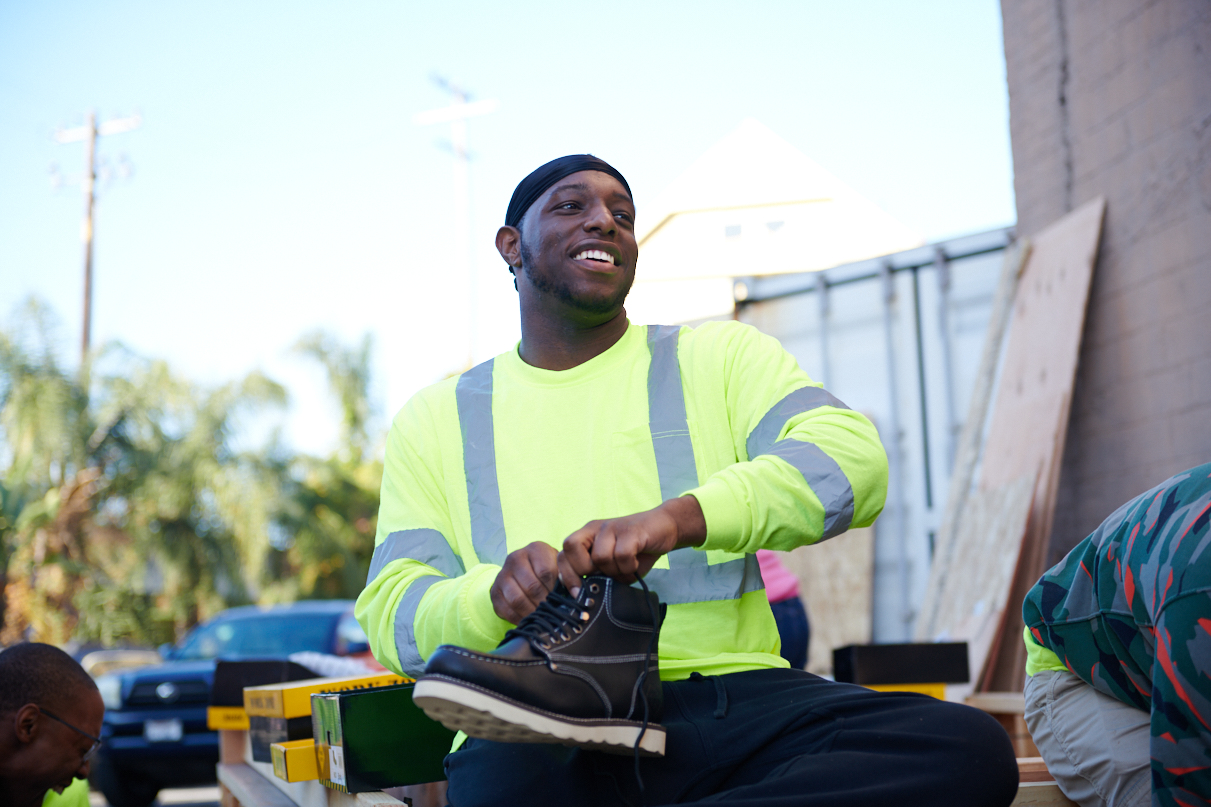 Bergquist: Maybe the way to think of it is from a capital, community and capacity-building angle. One thing that we want to do is to grant at least $25 million dollars over this strategic period to organizations led by people of color and those who have lived experience. That’s a big change to where we were even five years ago, but we’re really actively trying to seek out and cultivate relationships with those organizations so that we can partner with them and support their work. So, that would be one element there.
Bergquist: Maybe the way to think of it is from a capital, community and capacity-building angle. One thing that we want to do is to grant at least $25 million dollars over this strategic period to organizations led by people of color and those who have lived experience. That’s a big change to where we were even five years ago, but we’re really actively trying to seek out and cultivate relationships with those organizations so that we can partner with them and support their work. So, that would be one element there.
A related element is starting this year, we changed our funding model on the grant side from budget-based grants to unrestricted general operating grants. That means when organizations get funding from us, from our main portfolio, it is up to the leadership of that organization to dictate how that money is going to be used. So that’s a big change from where it used to be.
On the community side of things, we have set up a number of different affinity groups to support leaders, specifically leaders of color with lived experience, but also our white leaders in the field. We have a White affinity group where leaders have a different space to learn about these issues and talk more specifically about how to cultivate more people of color and lived experience talent at their organizations. So, we have something in the community called the BIPOC affinity group, and that’s a big part. More broadly, we’re just trying to build up the peer-to-peer connections. I think one thing we heard specifically from the leaders of color in our field is that they often feel disconnected with one another and from others doing the work, so we’ve made an extra effort to find ways to make those connections.
Then, on the capacity-building side, there have been a couple big shifts. Not that long ago, REDF didn’t do direct support on fundraising. That was an area that we felt wasn’t in our wheelhouse. We did a survey in 2020 that evaluated leaders across the field. We asked, among other questions, what type of capacity-building support would be most helpful to you? And in particular for leaders of color, outside of business planning, fundraising was the top issue. So we made a big investment this year that we’re going to start developing those capabilities. That type of support is now accessible and part of our general model, not just for leaders of color, but we’re trying to be more responsive to what the needs of the leaders are in the field and to build programming around that, rather than to take more of the standpoint of, “This is our menu. Take it or leave it.” One last aspect of the capacity side is that REDF has always toed an interesting line and I think other funders have this as well, where from doing the work over many years, you get good at recognizing patterns. You get pretty good at identifying what, in your opinion, are best practices. But the reality is that organizations are different and they’re not all the same. Our model for a long time was quite prescriptive where we had a playbook and things we thought were the right path. Over the last couple of years, we’ve struck a much better balance of not fully relinquishing that—because that’s why our partners want to work with us, to tap into the collective knowledge that we have—and finding middle ground of out of the stuff we’ve surfaced, what is most important to them and focusing on that. Then also, bringing in certain topics and areas that’s top of mind for them.
To bring it back to the topic of racial equity, we view this as a key part of that journey, of more deeply embedding DEI practices into all the tactical elements of what we do and shifting from a more traditional model to a much more trust-based one. Those are part of the expressions of it.
Nonprofit HR: You mentioned shifting to budget-based grants to unrestricted general operating grants. Can you explain that a bit more?
Bergquist: The way to think of it is, in 2015 we would give an organization a grant and work pretty closely with them to work line by line on what we would like the money spent on. Now, we write a check and we will follow up to ask how it’s spent, but there are no strings attached. It is cash in, and the organization can largely do with it what it pleases.
Nonprofit HR: Does that tie back to the quantitative and qualitative metrics?
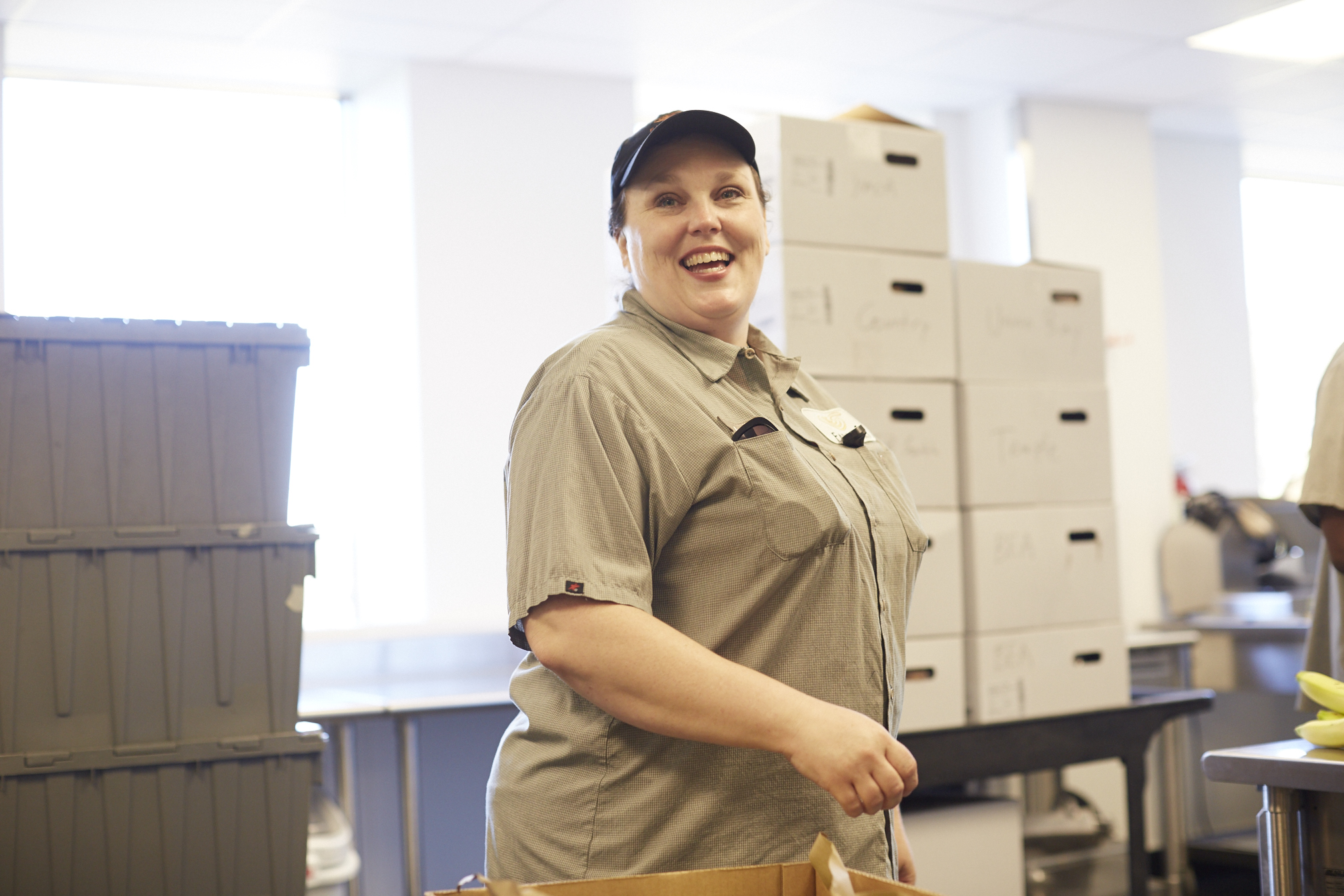 Bergquist: It does. I think it also ties back to this notion of trust-based philanthropy. We want to start the relationship from a point of trust. We are saying to them, “You’re in our portfolio because we believe in you as a leader and we believe in what you’re doing as an organization.” Upon reflecting, I think that it took longer in some cases to establish that trust when you start as loggerheads, and you have very different perspectives on where that money should be spent early on. And the truth is, we are a some ways away from determining whether it works from an outcome or metrics standpoint. It’s too soon to say, what is the impact of that going to be on the quantitative metrics that we care about? What I can say with absolute certainty, though, is from the qualitative metrics standpoint, this is very much something that’s been favored by the leadership team. From an anecdotal standpoint, from my perspective of helping oversee different projects we’re doing, we’re starting off on a more equal footing than I think we have in the past, so I think that’s really positive.
Bergquist: It does. I think it also ties back to this notion of trust-based philanthropy. We want to start the relationship from a point of trust. We are saying to them, “You’re in our portfolio because we believe in you as a leader and we believe in what you’re doing as an organization.” Upon reflecting, I think that it took longer in some cases to establish that trust when you start as loggerheads, and you have very different perspectives on where that money should be spent early on. And the truth is, we are a some ways away from determining whether it works from an outcome or metrics standpoint. It’s too soon to say, what is the impact of that going to be on the quantitative metrics that we care about? What I can say with absolute certainty, though, is from the qualitative metrics standpoint, this is very much something that’s been favored by the leadership team. From an anecdotal standpoint, from my perspective of helping oversee different projects we’re doing, we’re starting off on a more equal footing than I think we have in the past, so I think that’s really positive.
Nonprofit HR: Based on the organization’s strategic plan, we understand that REDF has supported over 200 organizations since 1997. What is the organization’s goal for the next year? In terms of the number of ESEs, what does growth look like for the organization?
Bergquist: One caveat before answering is that one of the strategic shifts we had in this period is not necessarily trying to go out and find a bunch of new organizations we haven’t worked with and start working with them. Although that is also part of it. A big focus of this strategic period has been on ways to deepen our impact and relationships with the groups we’ve already worked with in some form. One way to think of that is for organizations that have gone through our Accelerator program several years ago, but have never been in our flagship national portfolio, we’re making more of an effort to bring those groups into the fold. It’s not necessarily new leadership that we’re working with, but it is a very new relationship and a much deeper relationship.
But with that said, one of our goals this year is to try and bring 40 new organizations into the fold. We think of it as 40 new leaders, but as a rough proxy, 40 organizations into the fold that are new. Those could be organizations that come through our Accelerator program, it could be organizations that get loans from our RIIF program or those could be organizations that get connected in, perhaps, our government partnerships program. For example, it could be a new organization, say in LA, that we bring into LA:RISE, our existing public-private partnership there. Over time, once we’ve had groups get into those programs, they can be eligible for our main portfolio. That’s a way to think of it—that yes, we are trying to bring more into the fold, but we’re also looking for ways to go even deeper with ones we’ve already worked with.
Nonprofit HR: How is the organization working to sustain that pipeline of funding to support more ESEs?
Bergquist: The main thing I would say is that we’re not a foundation. Any money that we grant is money that we raise. I think, at least historically, there have been a few different channels to raise funds from. One has been through government partners, like the Social Innovation Fund (SIF) and LA:RISE, which is the regional initiative for social enterprise. That’s a big pot. I think one of the things that we really like about that funding is that a lot of it goes to the social enterprises, so it’s a great way to unlock a lot of money for social enterprise partners.
But we also rely on many other institutional funders, such as larger foundations that like working with intermediaries like REDF that have a really good pulse on how individual organizations and individual communities are evolving in some of these areas. And then, we have a very committed and generous network of major donors, many of whom have been giving for a while, so we are very thankful for them.
That is broadly the way we think of generating funding. One of our strategic initiatives, though, is how we can unlock more public funding. We’ve long thought that in order to truly drive scale in the field, there has to be a public solution or a public component to the solution. While it may not look like trying to set up an LA:RISE in every city around the country, we do think there is a huge amount of untapped potential to unlock more funds because we think the employment social enterprise is such a no-brainer solution for a lot of government entities that want to promote entrepreneurship, that want to generate better business, that want to do social impact and that want to give more people a shot at joining the economy that are currently kept out of it. That would be the overarching thing that would be different about this new period, finding ways to do that. And as we go to new geographies, there are more governments and more variables to contend with, understand and learn. Challenge is higher, but the potential is greater.
Nonprofit HR: SITA by Nonprofit HR is one of your organization’s partners in people management. How does this and the work the organization is doing with other consultants play into your overall strategic plan?
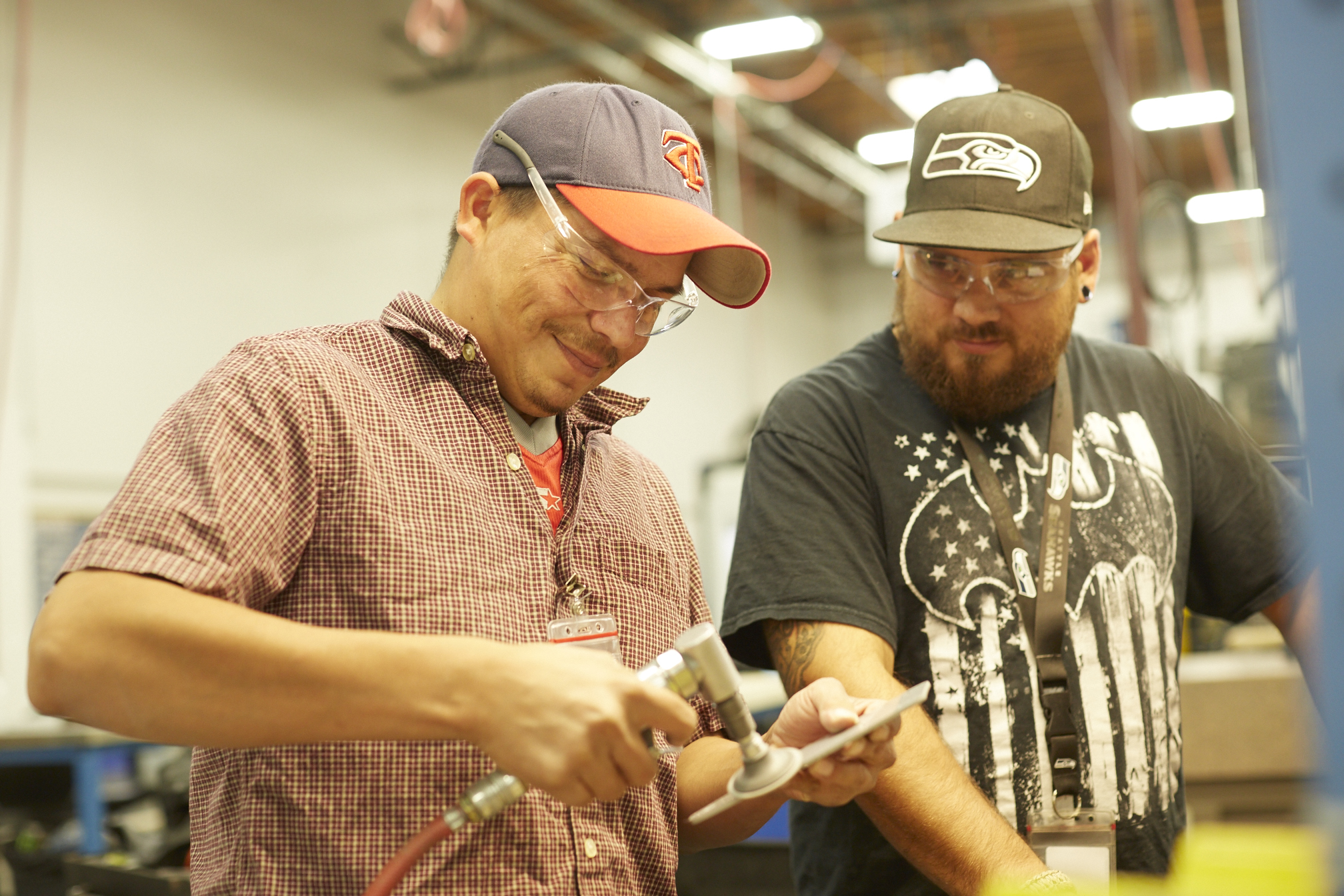 Bergquist: The way you can think of the capacity building team is we’re like the post-investment team. We’re the team that comes in after an investment and we work with the leadership team to figure out opportunities and challenges. We work collaboratively to figure out where there’s a need. And we ourselves as a team are able to take on a lot of projects, but there are certain types of projects that require an expert in the field and we ourselves don’t have that expertise. One of those areas, I would broadly call it, is human resources and human capital, and it’s also a new area for us. Not that long ago, things like human resources management was not a key focus of our capacity-building strategy. But in line with really understanding what leaders care about and, in particular, learning what people of color or leaders with lived experience care about, human resources is a huge issue. And in our perspective, it’s absolutely critical to have solid HR and human capital practices if you’re going to be an organization that can scale and be sustainable in the long term.
Bergquist: The way you can think of the capacity building team is we’re like the post-investment team. We’re the team that comes in after an investment and we work with the leadership team to figure out opportunities and challenges. We work collaboratively to figure out where there’s a need. And we ourselves as a team are able to take on a lot of projects, but there are certain types of projects that require an expert in the field and we ourselves don’t have that expertise. One of those areas, I would broadly call it, is human resources and human capital, and it’s also a new area for us. Not that long ago, things like human resources management was not a key focus of our capacity-building strategy. But in line with really understanding what leaders care about and, in particular, learning what people of color or leaders with lived experience care about, human resources is a huge issue. And in our perspective, it’s absolutely critical to have solid HR and human capital practices if you’re going to be an organization that can scale and be sustainable in the long term.
So that’s where SITA comes in. It’s a priority area and it’s also an area where we are not the right team to take it on. That’s why we feel very lucky to have established a partnership with your organization. That being said, this is year one of trying things out. And as we’ve gone back and forth with Patty, who has been very patient with us, we are learning in real time—what are the right projects? The right sequence of projects? Who from the organizations need to be involved? What types of prerequisites need to be in place before we get going? We are very much learning as we go right now, and I guarantee, if nothing else, we will have a more refined perspective on this five years from now. Until then, we’re going to do this current set of projects that we have ongoing and then reassess and go from there.
Nonprofit HR: Is there anything else you would like to share with our readers and our community?
Green: The only thing I would add is that when we talk about DEI and people management, we’re also doing that same work ourselves. We’re not just saying to our ESEs, “Hope you guys figure it out, here’s some help,” but we’re also doing a lot of this internally. Also, we do a lot of it internally before we preach it to ESEs to be sure that it’s applicable, so we’re looking at our leadership, our leveling guides and our career pathways, and have redone them based on staff feedback. Then, also having our own professional development conversations where we can have these tough conversations about race and also, educate ourselves via group book reads and a variety of professional development activities. There are different avenues for people to learn and listen and engage, depending on comfort level and also what’s important to folks. So, I would just add that it’s something I’m especially proud of at REDF. We’re not perfect, but we’re really, really good. And so, it feels awesome and comfortable to be able to talk to our ESEs about our perspective, how we’re handling it and share some of our best practices too.
Bergquist: I think we’ve covered a lot of ground and I hope we’ve done it justice. It’s been great working with Patty and Zach so far.
Learn more about our interviewees:
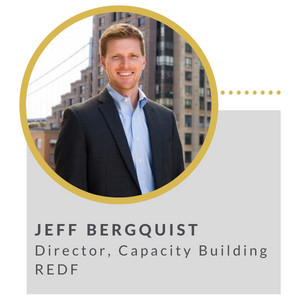 | As the Director of Capacity Building, Jeff Bergquist oversees the delivery of technical assistance to REDF’s social enterprise partners, the Farber Fellows program, and REDF’s network of expert and pro bono consultants. Since joining REDF in 2015, Jeff has worked with a wide variety of social enterprises across the country on projects pertaining to business planning, program design, and operational support. Jeff was previously at Bain & Company and taught 8th grade math through Teach for America. He has a BA and MBA from Stanford, and an MEd from Arizona State. Visit Jeff’s bio page. |
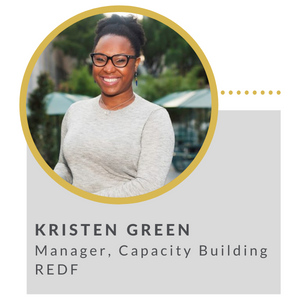 | Kristen Green, a Los Angeles native, has a passion for providing capacity building to social enterprises, helping them achieve their long-term goals for both mission and business success. Kristen received a B.A. in Political Science with a minor in Urban Studies, from Loyola Marymount University. She also holds a M.S. in Social Entrepreneurship from University of Southern California’s Marshall School of Business. In her free time, you can find Kristen reading, volunteering at her local animal rescue or visiting the park with Ms. Lois, her beloved retired greyhound. Visit Kristen’s bio page. |
Seeking HR support for your social enterprise? Visit gosita.com to learn more about our partnership and work with social enterprises!
About Social Impact Talent Advisors
Founded in October 2019, SITA by Nonprofit HR is a collaborative. Our parent company, Nonprofit HR, has been serving the talent management needs of the social impact sector for over 20 years. SITA brings Nonprofit HR’s extensive people management expertise exclusively to the social enterprise community. We address critical human resources needs in direct partnership with social enterprises, foundations, social enterprise incubators and impact investors.






























